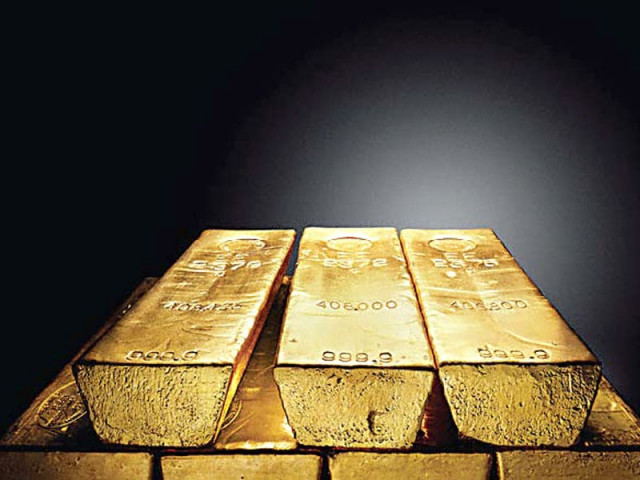A new global currency: Calculating a ‘fair price’ for gold
A return to the gold standard does not seem likely.

A new global currency: Calculating a ‘fair price’ for gold
Gold has traditionally been difficult to value as it has limited industrial use: it pays no dividends and is used primarily in the making of jewelry. It was used as virtual currency in the past, but the world economy was considerably smaller than what it is today while the practice was in vogue. Nonetheless, it is this historic use of gold that drives the modern speculation that gold has become pricier over time due to the eventual devaluation of paper currency, and the consequent potential return to a gold standard.
To evaluate the claim, let’s crunch some numbers. There is estimated to be around 170,000 tons of gold above ground. Annual production is around 2,500 tons, so the growth rate of gold-stock is only around 1.5 per cent per annum; making it a precious metal. Of the existing gold above-ground, around 80 per cent is used for jewelry, with a fraction being used in medicine and dentistry. Around 20 per cent – around 34,000 tons – is utilised for investment purposes, stocked mainly in the vaults of different national banks.
To calculate the fair-value of gold in the hypothetical situation that it becomes benchmark currency, one has to consider the size of the world economy (the gross domestic product of all nations combined).
This is roughly $65 trillion per annum. The velocity of money, or how many times a year each unit of cash is used, is around 9.0 in the United States. This means that a single dollar bill will change hands nine times every twelve months in the US. As the developing world has a much lower velocity, let’s take 6.0 as a rough weighted extrapolation for the rest of the world.
In this case, the amount of currency needed to run the economy would be around $10.8 trillion (because every dollar of the $10.8trillion will be used 6 times, totaling $65 trillion in transactions by year’s end). All of this electronic / paper money will be convertible into gold on demand.
Now let us assume that once gold becomes a currency, the level of gold used for investing purposes will rise to 50 per cent, from 20 per cent. The assumption is tenable, because when gold becomes expensive, many will be tempted to sell idle stocks of jewelry.
The estimated fair value of gold, in this case, would be the amount of currency needed, divided by the total gold-stock available for investment purposes. That is $10.8 trillion divided by 85,000 tons – which equals $127million per ton, or approximately $3,970 per ounce.
Even in this scenario, we will still want to use some paper currency instead of gold coins, because even a lowly one gram gold coin would be worth around $132. This would seriously affect the divisibility of such money for smaller trades. Silver coins, on the other hand, would be a much more practical currency since the metal is 50 times cheaper than gold – but that is another discussion altogether.
In conclusion, I want to present some final qualifications. I do not expect a return to a pure gold standard and prices to touch $4,000 per ounce because gold reserves are skewed in favor of a few countries such as South Africa. It will, therefore, be an inherently difficult proposition for the international community to agree on.
A basket of precious metals may be a way forward; in which case the value of gold will be weighted with other ores and therefore reduced. Even if gold is weighted as two-thirds in this basket, its fair value will fall to $3,000 per ounce. I will still call this an outlying scenario, as it remains to be seen if our hypothetical currency, backed by precious metals, will be too restrictive for future economic growth. This was primarily the reason why the original gold standard was abandoned in the first place.
A major downslide for gold prices is possible to levels below $1,000 per ounce, or even $500 per ounce. If world governments are willing to get their fiscal deficits in order instead of printing more and more money, inflationary fears would ease and confidence may be restored in paper currency. This would significantly ease the demand of gold that arises due to the devaluation of paper currency. I, however, do not see that happening anytime soon. Structural issues in the current democratic systems prevent such long-run policy measures.
Recommendations
I can see gold going up to $2,000 per ounce, but that would probably be the time to sell. By those levels, the possible risk of holding gold, to the rewards that might be had for holding it longer, may not be favorable.
The writer is an investment banker in Saudi Arabia.
Published in The Express Tribune, February 20th, 2012.



















COMMENTS
Comments are moderated and generally will be posted if they are on-topic and not abusive.
For more information, please see our Comments FAQ